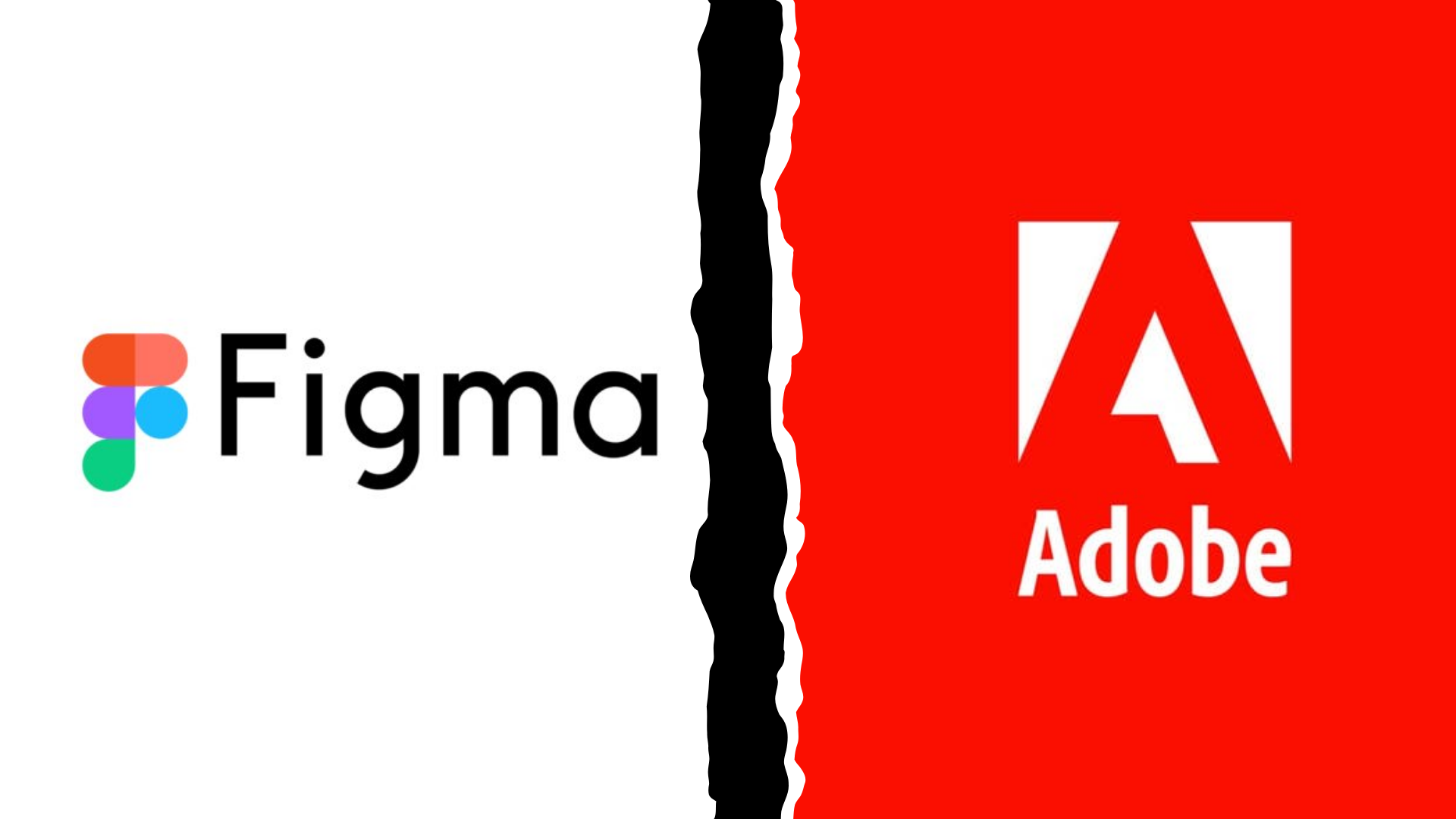In a surprising turn of events, the long-anticipated acquisition of Figma by Adobe has officially fallen through, marking a significant milestone for the design and tech industries. Adobe’s staggering $20 billion bid to acquire the cloud-based design platform had sparked debates across the industry, with opinions split on whether this move would bolster innovation or stifle competition. Regulators, industry experts, and Figma’s devoted user base closely watched the two-year-long proceedings, leading to a climactic decision to block the acquisition in 2024.
Figma’s independence is not just a win for the company—it’s a victory for innovation, competition, and the broader design ecosystem. Designers who feared Figma’s distinct features might be subsumed into Adobe’s ecosystem now have reason to celebrate. This blog explores the journey of the Adobe-Figma acquisition attempt, the challenges it faced, and what this decision means for both companies and the future of digital design.
The Context: Why Adobe Wanted Figma
Adobe’s intention to acquire Figma in 2022 was a bold move that signaled its desire to strengthen its foothold in the rapidly growing field of collaborative design tools. Figma, known for its revolutionary cloud-based platform, had rapidly gained traction among designers and developers. Its unique selling point was its real-time collaboration feature, which allowed teams to work seamlessly from anywhere, positioning it as a favorite in the era of remote work.
Adobe, on the other hand, has long been a powerhouse in the creative software industry. Tools like Photoshop, Illustrator, and Premiere Pro dominate their respective domains, but Adobe XD, its answer to Figma, failed to achieve the same level of adoption. Acquiring Figma would have given Adobe an opportunity to integrate the platform’s innovative features into its ecosystem, potentially securing its dominance in the creative market for years to come.
However, the move also raised significant concerns. Critics argued that the acquisition could hinder innovation by reducing competition, a concern that would later become central to the decision to block the deal.
The Regulatory Hurdles: A Deal Under Scrutiny
From the outset, Adobe’s bid to acquire Figma faced intense regulatory scrutiny. Antitrust regulators in the United States, European Union, and other jurisdictions raised alarms about the potential consequences of the acquisition.
The key concern was that Adobe, as a dominant player in the creative software market, would monopolize the space by eliminating its most direct competitor. This could lead to fewer choices for designers, higher subscription costs, and a slowdown in innovation. Regulators highlighted the importance of maintaining a level playing field where smaller, disruptive companies like Figma could thrive.
Investigations into the deal dragged on for months, with both companies providing extensive documentation to justify the acquisition. Ultimately, in early 2024, regulators decided to block the acquisition, citing antitrust concerns and the need to protect competition in the design tools market.
Relief Among Designers and Industry Stakeholders
The collapse of the deal has been met with widespread relief among designers, developers, and industry stakeholders. Figma’s user base, which has grown to include millions of professionals worldwide, had been vocal in opposing the acquisition.
Many feared that Adobe’s involvement would fundamentally change Figma’s identity. Concerns ranged from potential price increases to changes in Figma’s user-friendly interface and roadmap. Adobe’s subscription-based model, which often bundles multiple products under its Creative Cloud plan, was also a point of contention for users accustomed to Figma’s straightforward pricing structure.
Dylan Field, Figma’s CEO, addressed these concerns head-on following the decision:
“This outcome allows us to stay true to our mission of empowering designers everywhere. We remain committed to delivering the tools and features our users love while pushing the boundaries of what’s possible in digital design.”
Field’s statement resonated with Figma’s community, reinforcing the platform’s commitment to innovation and its user-centric approach.
Adobe’s Challenges and Next Steps
For Adobe, the failure to acquire Figma is undoubtedly a setback. The company had invested significant resources into the bid, viewing it as a strategic move to secure its leadership in the collaborative design space.
Without Figma, Adobe now faces the challenge of competing directly with a platform that has outpaced Adobe XD in terms of adoption and innovation. Adobe will need to refocus its efforts on improving XD and exploring new ways to attract designers who currently favor Figma.
That said, Adobe remains a formidable force in the creative software market. Its vast portfolio of industry-leading tools and significant R&D resources position it well to compete. The company may explore partnerships, in-house innovation, or even smaller acquisitions to strengthen its position in collaborative design.
The Future of Figma: Innovation Unleashed
With its independence secured, Figma is now well-positioned to continue its rapid growth and innovation. The platform’s success lies in its ability to anticipate and address the needs of modern designers, and this focus is unlikely to change.
In the coming years, Figma is expected to double down on several key areas:
- AI-Driven Design Tools: As artificial intelligence continues to reshape industries, Figma could integrate AI-powered features that simplify design workflows, enhance creativity, and improve productivity.
- Advanced Prototyping: Figma has already made strides in prototyping, but there’s room for growth in areas like interaction design and micro-animation tools.
- Third-Party Integrations: Figma’s ecosystem of plugins and integrations is a major strength. Expanding this ecosystem will further solidify its position as a central hub for design workflows.
- Global Reach: With remote work becoming the norm, Figma’s ability to support cross-border collaboration makes it a valuable tool for global teams. The company may focus on enhancing its presence in emerging markets to capture a broader audience.
Figma’s independence also allows it to maintain its unique identity, free from the constraints of a larger corporate structure. This agility is a key advantage as it continues to innovate in a competitive market.
Industry Implications: A Win for Competition
The decision to block Adobe’s acquisition of Figma has far-reaching implications for the tech industry. It sends a strong message that regulators are taking a more aggressive stance against monopolistic practices, particularly in sectors where competition drives innovation.
This outcome could discourage other major companies from pursuing acquisitions that might harm competition, leading to a more balanced and innovative marketplace. For smaller companies like Figma, it’s a reminder that success doesn’t always require being absorbed by a larger player. Independence can be a powerful asset in building a lasting impact.
Conclusion
The collapse of the Adobe-Figma acquisition is a defining moment for the tech and design industries. It underscores the importance of preserving competition and protecting user interests in an era where mergers and acquisitions often dominate headlines.
For Figma, this decision is a testament to its value as an independent company. It now has the freedom to innovate, expand, and shape the future of digital design without external interference. For Adobe, it’s a wake-up call to invest in organic growth and strengthen its existing tools to compete effectively.
Ultimately, this outcome benefits the entire design community. It ensures that users retain access to diverse tools, fuels healthy competition, and keeps innovation at the forefront of the industry. Figma’s journey is far from over—in many ways, it’s just beginning. And as the platform continues to evolve, it’s clear that the future of design is in good hands.
In an industry driven by creativity and collaboration, Figma’s independence serves as a reminder that innovation thrives when competition flourishes. This moment isn’t just a win for Figma—it’s a win for everyone who values the freedom to create without limits.
Suggested Reads:
Self-Driving Cars Are Thriving: Here’s Where to Look
Apple MacBook Pro (M4 Pro and Max) Review: Still on Top
Cybersecurity Talent Shortage: The Roots and the Solutions

Burhan Ahmad is a Senior Content Editor at Technado, with a strong focus on tech, software development, cybersecurity, and digital marketing. He has previously contributed to leading digital platforms, delivering insightful content in these areas.







